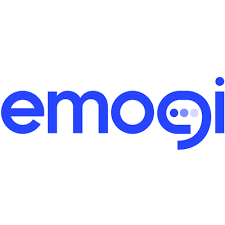 Only 10 years ago, social was considered the new frontier of digital advertising, but no longer. Banner ads have been proven to be the least trusted form of advertising, and Millennial users have conditioned themselves to ignore them on these platforms, glazing over the placements without absorbing the content in a state known as “digital ad fatigue.” Experienced social media users have even begun to recognize and disregard the sponsored posts that marketers insert directly into their news feeds. Branded content on social is becoming more and more unnoticed. Adding to the issue, sharing is shifting from public posts to private messaging within and outside of social platforms.
Only 10 years ago, social was considered the new frontier of digital advertising, but no longer. Banner ads have been proven to be the least trusted form of advertising, and Millennial users have conditioned themselves to ignore them on these platforms, glazing over the placements without absorbing the content in a state known as “digital ad fatigue.” Experienced social media users have even begun to recognize and disregard the sponsored posts that marketers insert directly into their news feeds. Branded content on social is becoming more and more unnoticed. Adding to the issue, sharing is shifting from public posts to private messaging within and outside of social platforms.
Social media, while still an essential part of digital communication, is no longer a novelty – and pushing ads on these platforms doesn’t cut it when it comes to reaching modern-day consumers. Last year alone, Facebook lost almost 2.8 million American users below the age of 25 – suggesting its “cool factor” may be on the decline.
With the challenge of finding authentic content in social news feeds amid the clutter of sponsored content, people are sharing in channels where they are guaranteed to directly reach their closest peers. In fact, 84 percent of content shared digitally happens through emails and messaging tools today. Marketers need to strategize beyond social to engage directly with users in the messaging space in order to cut through.
Also Read: The Changing State of Mobile Video Advertising
Here’s what marketers need to know about the world beyond social:
Ads will be designed to share
It is not enough to create content people see. Marketers need to produce content people use. Social media users are ignoring pop-ups, banner ads, and sponsored content out of habit – assuming these ads are designed with the purpose of distracting them from what they came online to do. But what if ads were designed by placing equal importance on consumer utility and brand communication?
Social platforms revolutionized the idea of “sharing” with friends, family, and even strangers. In the world beyond social, marketers will seek to improve this experience by creating ads that double as tools for communication. This form of branded conversational content takes the shape of stickers, GIFs, and emojis to help people express themselves in conversation.
By offering a visual asset that consumers actively choose to share and use to connect with others, brands guarantee people see and process their content instead of ignoring it as online clutter.
The personal engagement with these stickers and GIFs, as well as the authenticity of receiving one from a friend, form a deep and positive brand association in the minds of consumers, taking social sharing to the next level.
Also Read: Key Metrics for Measuring the Effectiveness of Your Influencer Marketing Campaign
Messaging – it happens within and outside social
Facebook feeds and Twitter pages are not the only places people share. Direct messaging, be it in Facebook Messenger, iMessage, a dating app, or Gboard, accounts for the majority of digital communication today. When marketers think about where their content is showing up, they cannot assume social platforms are the extent of their possibilities.
In the future, it will be standard for marketers to leverage the messaging space by surfacing content across platforms directly in users’ digital keyboards. By showing up where conversations are happening, brands gain increased exposure to their potential consumers.
This brand presence even opens up the possibility to alter conversations from a generic topic to discussions about a specific company.
Take for example McDonald’s brand McCafé, an early adopter of marketing in the messaging space. McCafé discovered consumers were 70 percent more likely to share McCafé content over unbranded content during their morning routines discussing coffee. What began as a conversation about someone needing or wanting a cup of coffee became a conversation about McCafé.
Also Read: 5 Reasons Why Social Media Influencers are the Future of Digital Marketing
Tech will be the foundation for everything
The biggest thing marketers need to know about the world beyond social is that technology is what makes it possible. Showing up across platforms in the messaging space requires an underlying tech engine that can serve up relevant, engaging content in user conversations based on keywords and context.
This type of engine applies natural language processing (NLP) to digital conversations, connecting words, demographic, places and time to determine what content a user will want at any given moment, and proactively surface it within their keyboard to facilitate better conversations.
Understanding when and how branded content is shared gives marketers an unprecedented perspective of their consumer base – a more complete look at customer sentiment than engagement on social platforms could ever provide.
Social platforms have served marketers well, but the world beyond social is now ready to be fully activated. Now that technology allows brands to join messaging conversations within and outside of social, companies can connect with consumers by providing content that helps them connect with each other. Just think – by using branded content directly in conversation, traditional banner ads could disappear completely.
A future without pop-up ads may be on the horizon if marketers have the courage to leave behind what they know and try new approaches to reaching consumers.
Also Read: Smile: You’re on Candid Camera! Facial Recognition Comes of Age











